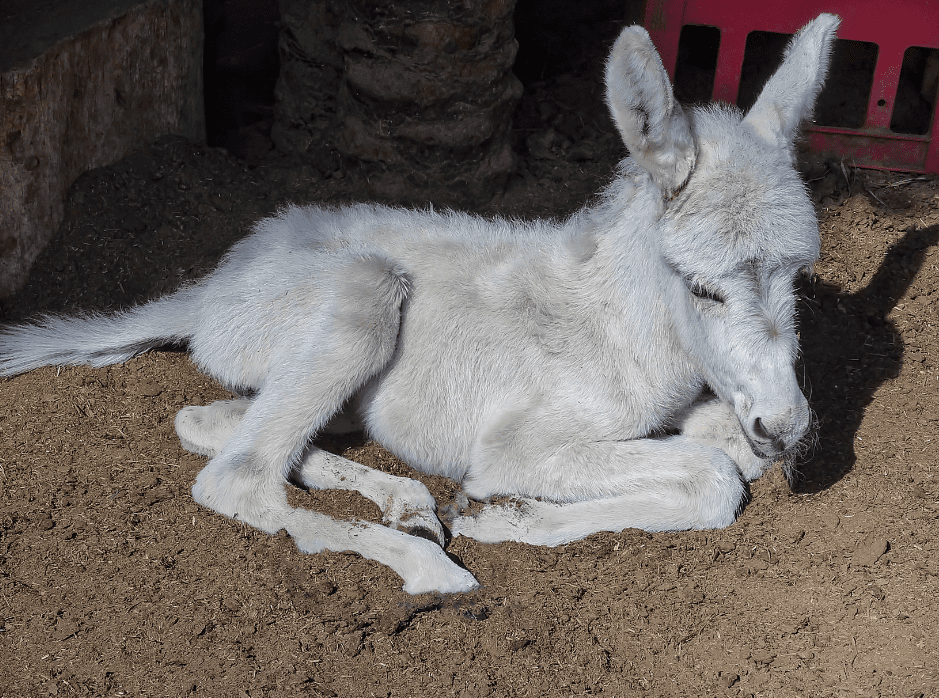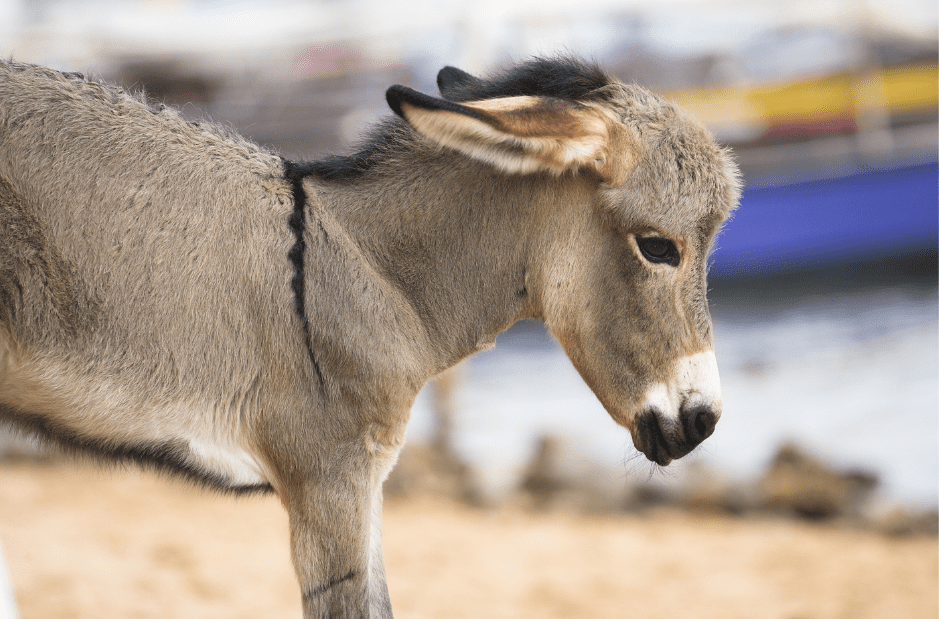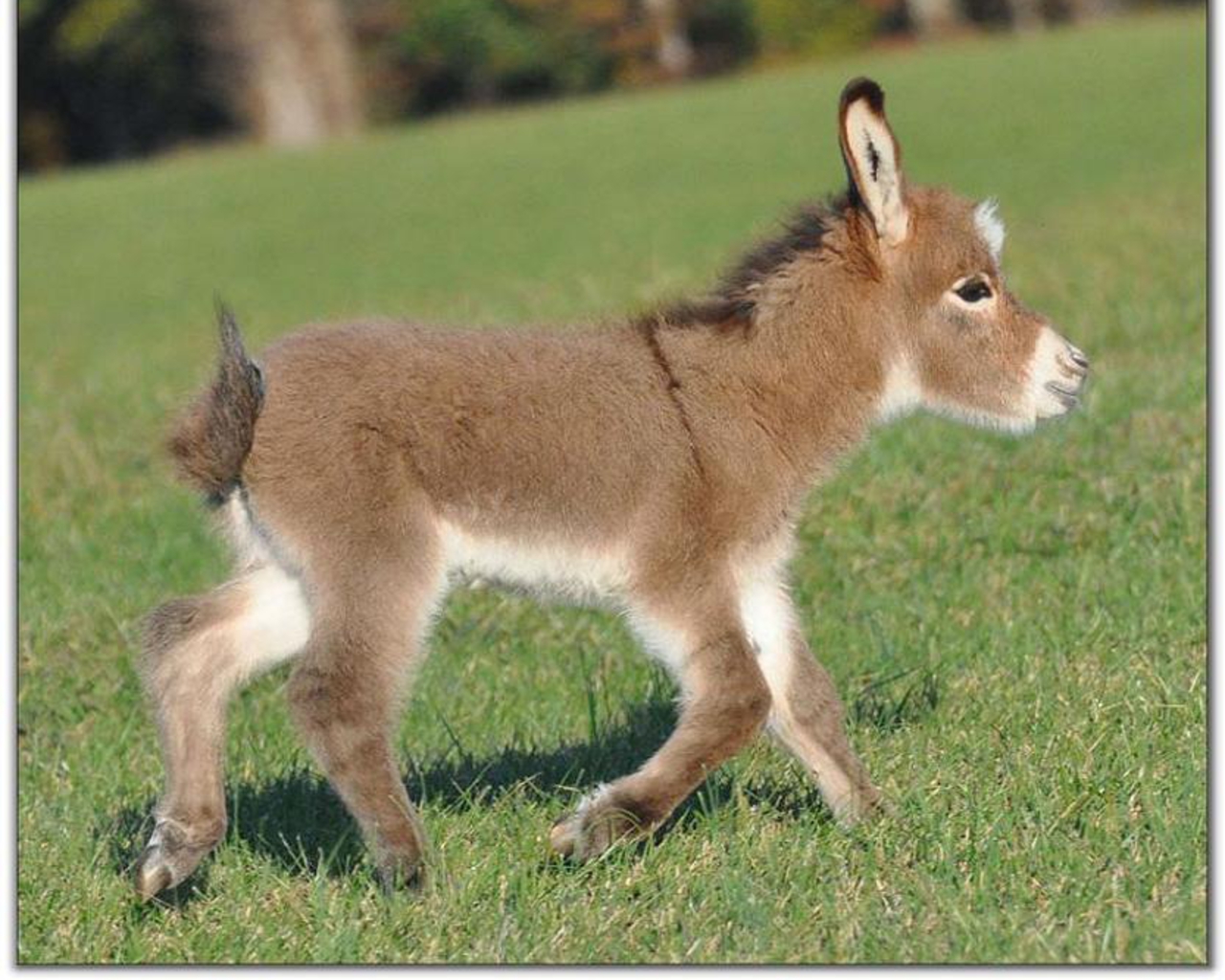Adorable Baby Donkey Facts: What Is A Foal?
What is the name for a baby donkey? It's a foal, a term that encapsulates the youthful charm and playful energy of these endearing creatures. From their endearing long ears to their soft, velvety coats, foals capture our hearts with their innocent curiosity and undeniable charm. But there's more to these young animals than just cuteness; they represent the future of donkey populations and play vital roles in various cultures and ecosystems around the world.
Understanding the life cycle of a donkey, from its earliest days as a foal to its mature years, unveils a tapestry of biological marvels and cultural significance. The journey begins with the birth of a foal, a delicate yet resilient creature weighing between 20 and 30 pounds. These newborns, standing a mere two to three feet tall, possess an innate ability to stand and walk within an hour of birth, a testament to their inherent strength and adaptability. Their long ears, disproportionately large compared to their bodies, contribute to their exceptional hearing, allowing them to detect sounds over vast distances.
| Term | Description |
|---|---|
| Foal | A young donkey of either sex, typically under one year old. |
| Filly | A female foal under four years old. |
| Colt | A male foal under four years old. |
| Jenny (or Jennet) | An adult female donkey. |
| Jack | An adult male donkey. |
| Gelding | A castrated male donkey. |
Learn more about donkeys from Encyclopedia Britannica.
This early mobility is crucial for survival, enabling foals to keep pace with their mothers and the herd, thus avoiding predators. Their large, expressive eyes provide a panoramic view of their surroundings, further enhancing their ability to detect potential dangers. As they mature, foals gradually shed their initial fuzzy coat, revealing the sleek, short-haired coat characteristic of adult donkeys. Their legs lengthen, their bodies fill out, and their playful antics evolve into the steady, sure-footed gait of their mature counterparts.
For the first year of their lives, foals remain dependent on their mothers for nourishment and protection. The bond between a jenny and her foal is a powerful force of nature, a testament to the deep-seated maternal instincts present in the animal kingdom. Jennies are fiercely protective of their offspring, providing them with constant care and guidance as they navigate the complexities of their environment. This nurturing relationship extends beyond the provision of milk; jennies also teach their foals essential survival skills, such as foraging for food, recognizing predators, and interacting with other members of the herd. This period of dependence is crucial for the foal's development, shaping its social behavior and preparing it for an independent life.
The terminology used to describe donkeys varies depending on their age and sex. While "foal" is the universal term for a young donkey, more specific designations emerge as the animal matures. Female foals are known as fillies, while their male counterparts are called colts. This distinction remains in place until the donkeys reach four years of age, at which point they transition into adulthood. Adult female donkeys are called jennies or jennets, and adult males are referred to as jacks. In some cases, male donkeys are castrated, a procedure that results in a gelding.
Beyond their biological development, foals hold cultural significance in many societies around the world. They have been integral to agricultural practices for centuries, serving as beasts of burden and companions to humans. Their strength, endurance, and gentle nature make them ideal partners in farming, transportation, and other essential tasks. In some cultures, donkeys are also revered as symbols of humility, resilience, and steadfastness. Their presence in folklore, literature, and art reflects their enduring impact on human civilization.
The distinction between a foal and a regular donkey lies not only in their physical attributes but also in their behavior and developmental stage. Foals are characterized by their playful nature, their insatiable curiosity, and their dependence on their mothers. They are constantly exploring their surroundings, engaging in playful interactions with other foals, and seeking the comfort and security of their mothers' embrace. As they mature, these youthful exuberances gradually give way to the more reserved and pragmatic behaviors of adult donkeys.
The study of donkey foals offers a window into the fascinating world of animal development, social behavior, and cultural significance. From their wobbly first steps to their eventual integration into the herd, foals embody the resilience, adaptability, and enduring spirit of these remarkable animals. Their journey from infancy to maturity is a testament to the power of nature's design and the intricate interconnectedness of life on Earth. They remind us of the importance of nurturing the young, preserving biodiversity, and appreciating the diverse tapestry of life that surrounds us.
It's also worth noting the fascinating biological processes that occur during a donkey's birth. Hoofed animals, including donkeys, are born with a soft capsule called the eponychium, which protects the mother's uterus and birth canal from the sharp edges of the hooves during pregnancy and birth. This protective layer, sometimes referred to as "fairy fingers," "golden slippers," or "horse feathers," wears down naturally as the foal takes its first steps, a subtle yet remarkable example of nature's ingenuity.
And while donkeys themselves are not hybrids, they are often involved in the creation of hybrid animals, most notably mules and hinnies. A mule is the offspring of a female horse (mare) and a male donkey (jack), while a hinny is the result of breeding a female donkey (jenny) with a male horse (stallion). These hybrids possess unique characteristics inherited from both parents, showcasing the complex interplay of genetics and inheritance.



Detail Author:
- Name : Catharine Gutmann
- Username : apaucek
- Email : elmo93@hotmail.com
- Birthdate : 1983-12-10
- Address : 100 Princess Path Port Mattie, NM 22939
- Phone : 667.901.1481
- Company : Terry-Reichert
- Job : Director Of Marketing
- Bio : Facere est hic magnam iure et et facere. Veritatis fugiat ea sit magni fugiat eaque. Quia itaque fugit deserunt qui sunt amet. Ipsum omnis dolorem laudantium totam animi dicta temporibus.
Socials
twitter:
- url : https://twitter.com/sadie_real
- username : sadie_real
- bio : Et omnis modi voluptatem dolor voluptates. Nulla nemo molestiae ipsum omnis tenetur. Eaque ea voluptas nisi nesciunt at.
- followers : 956
- following : 2981
instagram:
- url : https://instagram.com/sadie_paucek
- username : sadie_paucek
- bio : Tempore eos aut et magni molestias facilis. Reprehenderit eaque et id corrupti debitis qui non.
- followers : 258
- following : 1506
tiktok:
- url : https://tiktok.com/@sadie7227
- username : sadie7227
- bio : Qui earum iure harum voluptates distinctio voluptas inventore.
- followers : 2426
- following : 2387
facebook:
- url : https://facebook.com/sadie_real
- username : sadie_real
- bio : Accusamus laudantium ex quae facere velit.
- followers : 536
- following : 1534